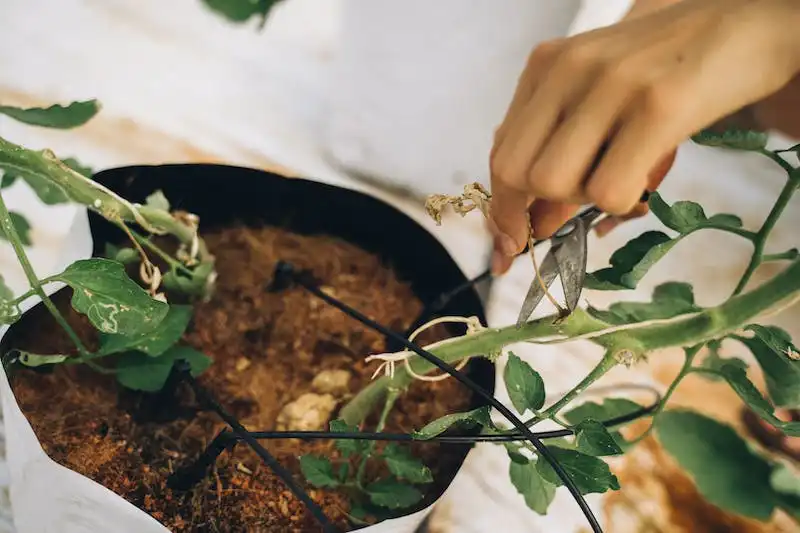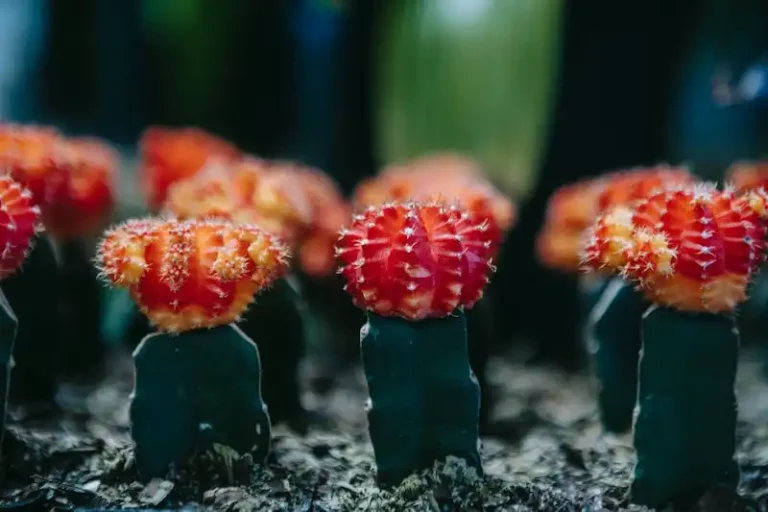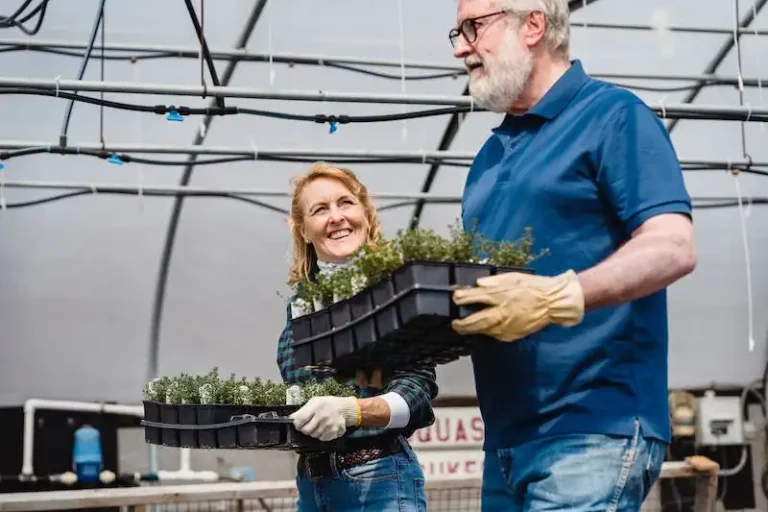Red Russian Kale is a variety of kale that belongs to the Brassica family, which includes cabbage, broccoli, and Brussels sprouts. It is known for its beautiful, full leaves that are deep green with purple veins. Unlike other varieties of kale, Red Russian Kale has a softer texture and a slightly sweeter flavor.
Red Russian Kale is a cool-weather plant that thrives in temperatures between 60 and 70 degrees Fahrenheit. It can be planted in both the spring and summer, but it is also tolerant of frost and can withstand temperatures as low as 20 degrees Fahrenheit. This makes it a great option for winter cultivation in colder zones.
Growing Red Russian Kale is relatively easy. It can be started from seeds indoors and then transplanted outdoors, or it can be directly sown into the garden. The plants should be spaced about 12 inches apart to allow for good air circulation and to avoid overcrowding. It is important to keep the soil moist but not waterlogged and to provide the plants with good drainage.
Red Russian Kale is a versatile vegetable that can be used in a variety of dishes. It can be eaten raw in salads, cooked in soups and stews, or sautéed with lemon and garlic for a flavorful side dish. The leaves can also be used as a wrap for other ingredients, such as rice or meat, or added to smoothies for an extra boost of nutrients.
Harvesting Red Russian Kale is relatively simple. The young leaves can be harvested as needed by cutting them off at the base of the stem. The outer leaves can also be harvested by snapping them off at the base and leaving the center of the plant intact for future growth. This allows the plant to continue producing new leaves throughout the season.
In conclusion, Red Russian Kale is a delicious and nutritious vegetable that is easy to grow and harvest. Its unique flavor and beautiful appearance make it a favorite among gardeners and chefs alike. Whether you plant it in your garden or purchase it from a local farm or grocery store, Red Russian Kale is a great addition to any meal.
Kale Red Russian
Kale Red Russian is a popular variety of kale that is known for its unique flavor and beautiful red color. It is a member of the cabbage family and is often used in a variety of dishes, from salads to stews. This variety of kale is easy to grow and can be planted both in the spring and summer, although it is more tolerant of cold temperatures and can even withstand frost.
Red Russian kale plants thrive in zones 3-10, making it a versatile option for many gardeners. Sowing the seeds directly into the soil or starting them indoors before transplanting is a matter of personal preference. It’s important to allow enough space between the plants to ensure good air circulation and prevent crowding.
The greens have a slightly sweet and mild flavor, with a hint of lemon. The leaves are wavy and have white veins, giving them a unique and attractive appearance. Red Russian kale is also known for its high yield, making it a great choice for those who want to grow a large amount of kale for consumption or sale.
When it comes to cultivation, Red Russian kale is not very demanding. It can be grown in a variety of soil types, although it prefers well-drained soil rich in organic matter. The plants should be watered regularly, especially during dry periods, to ensure proper growth and development. Adding a layer of mulch around the plants can help conserve moisture and suppress weeds.
Red Russian kale is relatively pest and disease resistant, although aphids and cabbage worms can sometimes be a problem. To control these pests, you can use insecticidal soap or introduce beneficial insects like ladybugs to your garden. Regularly inspecting the plants and removing any damaged or yellowing leaves can help prevent the spread of disease.
Harvesting Red Russian kale is a simple process. The leaves can be picked individually as needed or the entire plant can be cut at once. The leaves are best harvested when they are still young and tender, before they become tough and bitter. Red Russian kale can be stored in the refrigerator for up to a week, although it is best consumed fresh for optimal flavor and nutrition.
For those interested in saving seed, it’s important to keep in mind that kale plants are biennial and will produce seed pods in the second year of growth. To avoid cross-pollination, it’s best to plant only one variety of kale in your garden. Allow the seed pods to dry on the plant before harvesting them. The seeds can be stored in a cool, dark place for future planting.
In summary, Red Russian kale is a versatile and nutritious vegetable that is easy to grow. Its unique flavor and beautiful appearance make it a popular choice among gardeners and chefs alike. Whether you’re a kale enthusiast or just looking to try something new, Red Russian kale is worth adding to your garden. For more information on growing kale and other gardening tips, be sure to follow our newsletter and check out our website for more helpful resources.
Cultivation
Red Russian Kale is a variety of kale that is known for its deep red leaves and sweet flavor. It is a member of the cabbage family and is easy to cultivate.
For best results, sow Red Russian Kale seeds indoors in early spring or late summer, or directly into the soil outdoors in early spring or late summer. The seeds can be sown at a depth of about 1/4 inch and should be spaced about 12 inches apart. Avoid planting Red Russian Kale near other members of the cabbage family to avoid cross-pollination.
Red Russian Kale is a cold-tolerant plant and can tolerate frost and even some freezing temperatures. It grows best in full sun but can also thrive in partial shade. The plants prefer well-drained soil and can be grown in both soilless and traditional garden beds.
Once the Red Russian Kale plants are established, thin them out to allow for proper growth and airflow. The leaves of the kale can be harvested as soon as they reach a full size, usually when they are about 8 to 12 inches long. Harvesting can be done by cutting the leaves at the base or by pulling the whole plant from the ground.
To maximize the yield of Red Russian Kale, it is important to keep the plants well-watered and mulched. Mulch helps to retain moisture, control weed growth, and protect the plant roots from extreme temperature fluctuations. Red Russian Kale can be harvested continuously throughout the growing season, and the flavor of the leaves can improve after exposure to frost.
Red Russian Kale is a versatile vegetable that can be used in a variety of dishes. It can be eaten raw in salads or added to soups, stews, and stir-fries. The leaves have a slightly wavy texture and a mild, slightly sweet flavor. Some people describe the taste as a cross between cabbage and kale.
In order to keep Red Russian Kale seeds for future planting, allow the pods to dry on the plants and then remove the seeds. Store the seeds in a cool, dry place until they are ready to be planted again.
For more information on growing Red Russian Kale, visit our website or sign up for our newsletter. We provide helpful tips and resources for growing this nutritious and delicious vegetable.
Important Notes:
- Red Russian Kale is not related to the Russian family of kale.
- Red Russian Kale can be harvested year-round, unlike other varieties that are mostly harvested in spring/summer.
- To avoid direct sun, Red Russian Kale can be grown under the shade of taller plants or structures.
- Red Russian Kale is tolerant to cold temperatures and can survive mild winter conditions.
Follow the instructions provided to ensure successful cultivation of Red Russian Kale and enjoy its nutritious greens!
Consumption
Red Russian Kale is a versatile vegetable that can be consumed in various ways. It is known for its tender leaves, which have a slightly sweeter taste compared to other kale varieties. Here are some notes on how to consume Red Russian Kale:
| Consumption Method | Description |
| Raw | Red Russian Kale can be enjoyed raw in salads or as a garnish. The young leaves have a delicate texture and mild flavor that adds a pleasant crunch to any dish. It pairs well with lemon and garlic for a refreshing salad. |
| Cooked | Red Russian Kale is delicious when cooked. It can be steamed, stir-fried, or sautéed. Cooking softens its texture and brings out its natural sweetness. The flavor becomes more robust and savory, making it a great addition to stir-fries, soups, stews, and pasta dishes. |
| Juiced | Red Russian Kale can be juiced for a nutritious and refreshing drink. Its vibrant red color adds a visually appealing touch to any juice blend. Combine it with other fruits and vegetables like apples, carrots, or ginger for a nutrient-packed boost. |
To maintain the best quality of Red Russian Kale, keep the following points in mind:
- Keep the kale leaves refrigerated in a plastic bag or airtight container to retain freshness.
- Take notes of the dates of harvest and the variety of seeds used for future reference.
- Keep the plants well-watered during hot temperatures, especially during summer months.
- Protect the plants from frost by covering them with mulch or using frost covers.
- Plant Red Russian Kale in the early spring or late summer for optimal cultivation.
- Harvest the kale leaves when they reach the desired size, typically between 8-12 inches. The younger leaves tend to be more tender and flavorful.
- When planting Red Russian Kale, avoid cross-pollination with other kale varieties to maintain the true genetic characteristics of the plant.
- Allow some of the mature plants to flower and produce seeds for future planting.
Red Russian Kale can be enjoyed year-round, but it thrives best in cool weather. It can tolerate some shade but grows best in full sun. Unlike other kale varieties, Red Russian Kale is tolerant to heat and can resist bolting, which is the premature production of flowers and seeds.
In colder zones, Red Russian Kale can even grow throughout the winter, making it an excellent choice for winter gardening. Its deep, wavy leaves and purple veins add visual interest to any garden.
To follow the complete growth cycle of Red Russian Kale, start from late winter or early spring by sowing the seeds indoors or directly in the garden. Thin the plants to maintain about 12-18 inches of spacing between them for optimal growth.
When harvesting Red Russian Kale, cut the leaves just above the central growth point to encourage regrowth. It’s important to harvest the leaves before they become yellow or develop a bitter flavor. To extend the harvest season, grow multiple plantings throughout the year.
For more information on Red Russian Kale, cultivation techniques, and harvesting tips, check out the following links:
- [LINK 1]
- [LINK 2]
- [LINK 3]
Whether consumed raw or cooked, Red Russian Kale is a nutritious and delicious addition to any diet. Its unique flavor and versatility make it a popular choice among home gardeners and chefs alike.




